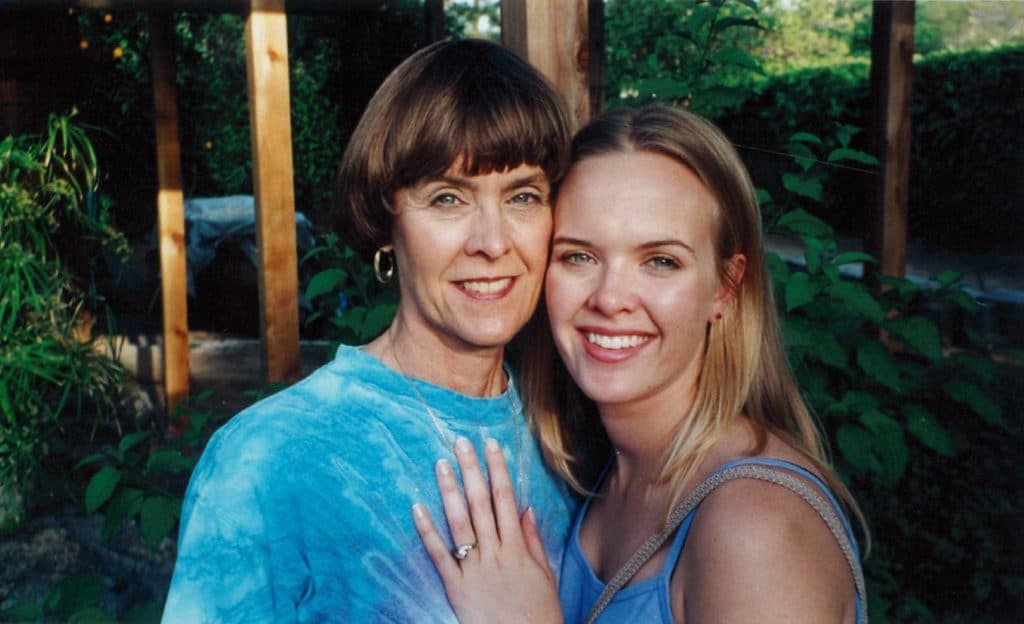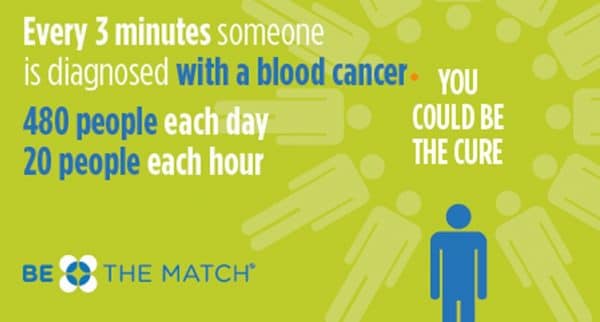Nov. 28, 2018
Amanda Nemec was always close to her mom. She never did go through the awkward teenage stage where they didn’t get along.
“She was my best friend since the time I was old enough to realize I was lucky to have a friend in her,” Nemec said.
When it came time for college, Nemec had long planned to attend Mesa Community College. Not because it was cheaper than a four-year university or in close proximity to her home (though, those were nice perks), but because her mother was the dean of students there.
Before and after classes, Nemec stopped by her mom’s office for a visit, and they would sneak away for lunch whenever they got the chance, catching up on school, work, boys and friends.
But just like her love of reading, dogs, cooking and great sunsets, Judy Taussig also passed along her love of mountains to her daughter. After earning her associate’s degree from MCC, Nemec transferred to Northern Arizona University to pursue her bachelor’s degree in mechanical engineering.
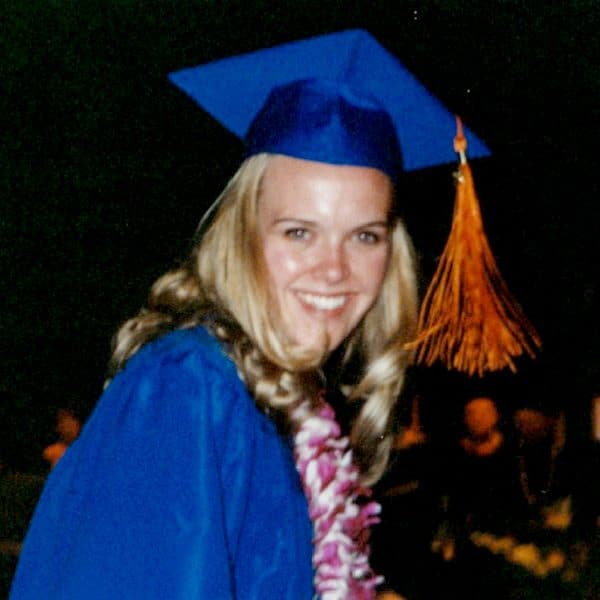 As much as she loved living at an elevation of 7,000 feet, learning to build a routine that didn’t involve daily visits with her mom was tough. And so, they built a new routine: Daily phone calls and emails, sharing recipes and sending each other cards and letters in the mail, usually for the sole purpose of including a Dilbert cartoon about engineers or something with a panda on it (an association that unavoidably comes with the name Amanda).
As much as she loved living at an elevation of 7,000 feet, learning to build a routine that didn’t involve daily visits with her mom was tough. And so, they built a new routine: Daily phone calls and emails, sharing recipes and sending each other cards and letters in the mail, usually for the sole purpose of including a Dilbert cartoon about engineers or something with a panda on it (an association that unavoidably comes with the name Amanda).
While at school, Nemec had the time of her life.
[block-quote align=”center”]I loved everything about attending NAU. I made lifelong friends there, I met my husband there and I got an amazing education.[/block-quote]
During the summer of her senior year, she accepted a competitive internship in Seattle with The Boeing Company, an aircraft manufacturer. Nemec credits NAU’s engineering program for landing her the gig—the design projects she experienced and real-life skills she acquired in school set her resumé apart from the rest.
After graduation, the company offered her a full-time position. But the only way she would accept the job was if she could return to the valley and work out of the Mesa plant—two years away from her mom was long enough. Nemec was hired to work on Apache Attack Helicopters, the same helicopters that she watched fly over her house growing up.
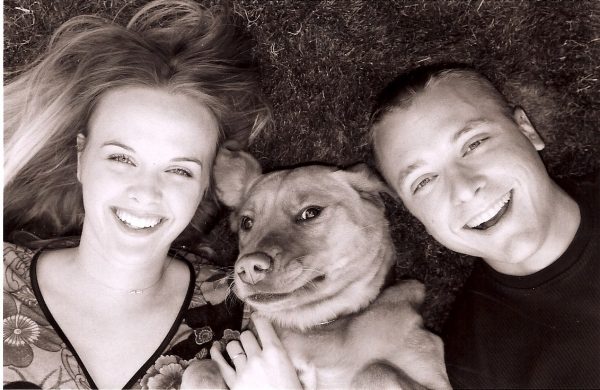
She was living the dream—dream job, dream husband, dream dog and dream home with her mother nearby.
But in the fall of 2006, Nemec’s world turned upside down when, at the age of 62, her mother was diagnosed with acute myeloid leukemia, a type of blood cancer for which there is no cure.
“When you have a loved one who is sick, you feel helpless,” Nemec said. “There’s nothing you can do besides visit them in the hospital and try to make a horrible situation easier for them in any way you can.”
But no number of milkshakes or movies watched by her hospital bedside would help. There was nothing Nemec could do to save her mom—she was losing her best friend.
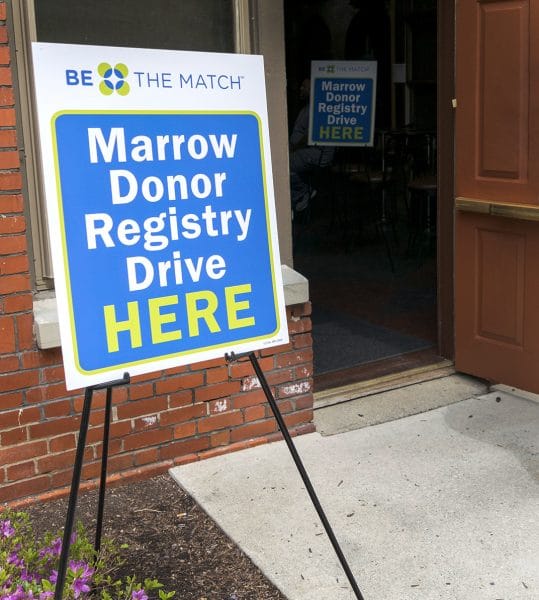 In the midst of Taussig’s battle, Nemec noticed a Be the Match drive being held at a local church. She knew joining the registry wouldn’t help her mom, but maybe, she thought, she could help someone else. It was as simple as filling out some paperwork and getting her cheek swabbed—within 10 minutes, she had joined the more than 19 million people throughout the world who are a part of the bone marrow registry.
In the midst of Taussig’s battle, Nemec noticed a Be the Match drive being held at a local church. She knew joining the registry wouldn’t help her mom, but maybe, she thought, she could help someone else. It was as simple as filling out some paperwork and getting her cheek swabbed—within 10 minutes, she had joined the more than 19 million people throughout the world who are a part of the bone marrow registry.
According to the Be the Match website, one in 40 people in the registry are asked to go in for additional testing. After that, only one in 430 people are actually a close enough match to donate. Most people go their whole lives on the registry without matching with anyone. Nemec knew plenty of people who had been on the registry for decades and never gotten a call—the last thing she expected was to be the exception.
On Aug. 14, 2014, Nemec received a call from her bone marrow coordinator—she was a potential match. But this didn’t mean she was the best fit; 20 other people across the United States also were matched with the same patient.
[block-quote align=”center”]I didn’t think twice, I agreed to go forward with testing and I started to really hope that I’d be the best match.[/block-quote]
Nemec went to a lab to have some bloodwork done. Afterward, all of the vials from potential donors were collected for additional testing. Then, she waited for the results. Months went by, and Nemec didn’t hear anything. She woke up every day hoping to get a call, but as time continued to pass, she began to lose hope.
Then, at the end of October, she received a second call—she was the best match.
“I was excited and really emotional. I had lost my mom a few years before to her leukemia, and I couldn’t believe that I might actually have a chance to help someone who was fighting cancer like she did.”
Because there were no doctors who specialized in bone marrow harvesting available in Arizona, the surgery was scheduled for Dec. 3, 2014, in Seattle. The last time she visited the seaport city was for her internship, 14 years prior.
“One of the hardest conversations I had with my coordinator was a few weeks before my actual donation. She told me that one week before I donated, my patient would start an intense round of chemo and radiation to kill off every bit of his own bone marrow so he would be ready for mine. At that point, his only chance at survival was my donation.”
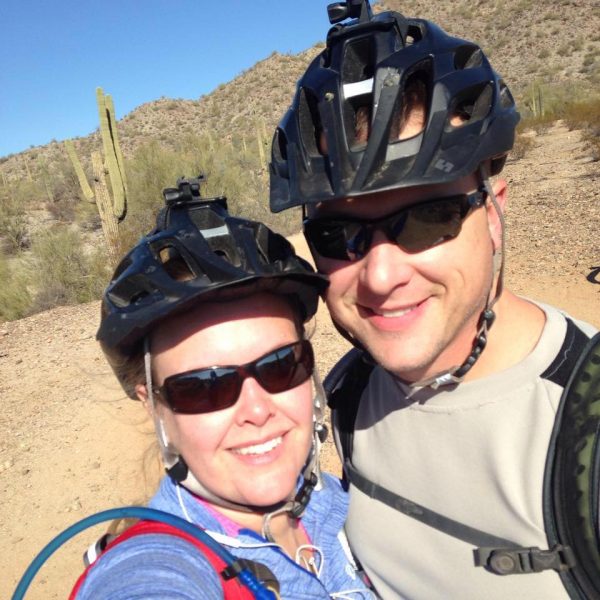
The pressure was on, but everything seemed to be in order: paperwork was complete; she passed the physical exams; additional testing was done; and she had more blood drawn—Nemec essentially stocked a blood bank full of her own blood that she would donate to herself post-surgery.
Then, the day before she and her husband were scheduled to leave for Washington, they were out riding bikes when Nemec took a tumble.
[block-quote align=”center”]My very first thought when I hit the ground was about my recipient and what this meant for the donation. I was so scared the surgery might be in jeopardy.[/block-quote]
In Seattle, she met with doctors at the Seattle Cancer Care Alliance who did additional testing to make sure she was still eligible to donate. Despite injuries from her fall the day before, she was cleared.
Two doctors performed the two-hour surgery, each harvesting bone marrow from more than 100 tiny holes drilled in Nemec’s hip bones. While they worked, a specialist from the bone marrow registry immediately processed her marrow in the operating room. When the surgery was over, the specialist hopped on a plane, bone marrow in tow, to make sure the patient received the donation within a 24-hour window of being extracted.
“After surgery, I was feeling pretty rough,” she said. “While I was still fighting through the anesthesia to wake up fully, the doctors and the bone marrow specialist came in to check on me. They knew my mom’s leukemia was the reason I was in the registry. They also knew that she didn’t survive it.
“The lead surgeon came to my bedside and took my hand and thanked me for what I did. He told me he knew how much this must mean to me and how much it would have meant to my mom that I’d been able to help someone like this. I wasn’t the only one crying in that room.”
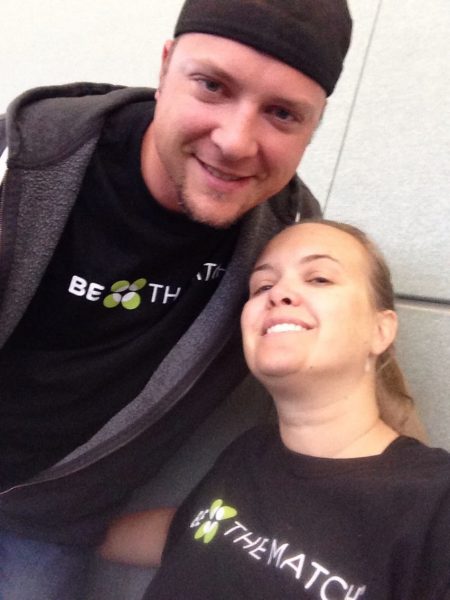
After a few popsicles and receiving a unit of the blood she had donated to herself a few weeks prior, Nemec was able to get up and move around. After hugs and thank yous from nearly every nurse and doctor on duty, she was released from the hospital.
A full day’s rest later, a sore Nemec and her husband were on a plane back to Phoenix, both sporting their Be the Match T-shirts, and sharing her story with anyone who noticed the bulky padding wrapped around her hips.
Her recovery, now in the comfort of her own home, was fast. She was back to work within two days, and despite doctors taking almost five cups of bone marrow, she was able to regenerate it within 20 days—leaving no trace of the procedure less than a month prior. She had to stay away from any activities where she might hurt herself and wasn’t allowed to get back on her bike for a few weeks, but it was a small price to pay for the opportunity to save someone’s life.
Nemec never expected to hear anything more about her bone marrow recipient. For privacy reasons, there are very few things that her Be the Match coordinator is allowed to share. Going into the surgery, she only knew that her patient was a 29-year-old male, diagnosed with acute lymphoblastic leukemia, who lived in a Spanish-speaking country.
On May 5, 2015, five months after her donation, Nemec was out to lunch with her husband when her cell phone rang. It was her bone marrow coordinator—she had news. Not only was Nemec’s recipient alive, but he was completely cancer-free and back to living a normal life.
[block-quote align=”center”]After hearing the news, I burst into tears in the middle of the sandwich shop.[/block-quote]
“I was so, so happy, but still struggling with the loss of my mom so that happiness was mixed with some sadness. Mostly though, I felt like I was given a gift by being selected. I single-handedly saved a life. There was a man out there with a family and a future, and that was because I joined the registry and was a close enough match to make a difference.”
Nemec said one of the best things to come of her life-saving donation was the number of people who joined the registry after hearing her story. Dozens of individuals started tagging her in social media posts with photos of their at-home cheek swab kits. One of her friends was recently contacted about being a potential match and is starting the same process Nemec went through in hopes of being chosen to donate.
“It’s crazy to think that there is someone out there walking around with my DNA. If I hadn’t joined the registry, I often wonder if my recipient would be alive today.”
Nemec may not have been able to save her mom, but it is because of Taussig’s battle with cancer that one, now-34-year-old man is living cancer-free. Nemec not only did something sure to make her mom proud, she gave someone the best gift of all: Life.
Consider joining the Be the Match registry. To request your free at-home cheek swab kit and join the registry, visit the Be the Match website.
Carly Banks | NAU Communications
(928) 523-5582 | carly.banks@nau.edu
